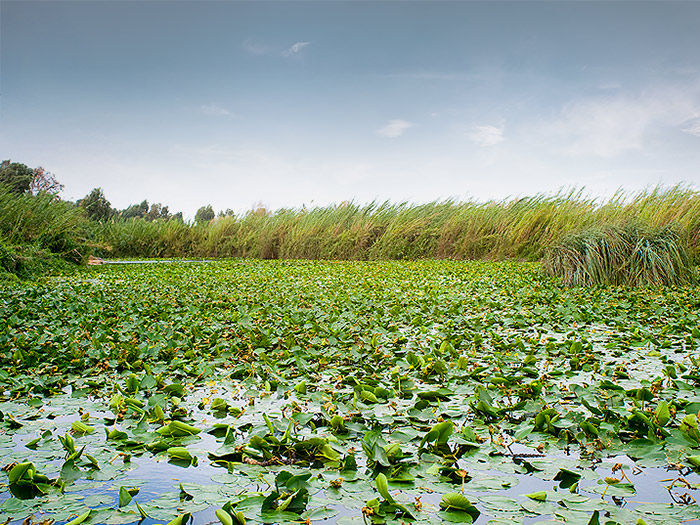Fabrics and home decor textiles are the best way to make a room feel more confortable. You can use it on virtually any item either to make a bold statement or to highlight an area. The textures and prints available are of such variety that it will sometimes be difficult for you to decide. That is why I created this guide. It will help you selecting fabrics for your home and mixing them.
The basics
The 5 guidelines that will help you!

Using fabrics to decorate your home means that you have to consider a few important premises. Fabrics come in a complexity of patterns, textures, weaves and colors. Let us go step by step.
1. The weather:
Think of your hometown and how the weather behaves throughout the year. Do you have defined seasons or is it cold/hot all year? This is because you will need to use the fabrics to your own advantage.
There are fabrics that are more adequate for each climate. If you live by the beach and is relatively hot all year for sure you won’t be using wool.
2. The colors:
Pick 3 colors (always pick even numbers of colors when decorating). You will use them throughout your decoration.
From those 3 colors select which will be the highlight color (a color that will be strong but used sparsely), your predominant color (the color that will be mostly used) and the balance color (as the name indicates it will make the balance between the predominant and the highlight colors).
3. The fibers:
There are synthetic and natural fibers. Natural fibers have different origins and can come from plants or animals. However there are certain natural fibers that won’t meet your conservational, moral or religious beliefs. In that case you have the synthetic fibers, man-made, and that can emulate a lot of natural materials. For example if you do not want to use animal fur of skin, you can find fine imitations made of polyester and other synthetic fibers.
Remember: certain fibers are amazing for warm weather but won’t be so pleasant on cooler climates. Check below the fibers slideshows to learn more about what you can find in the market.
4. The prints:
There are many ways to apply a print to a fabric, but what will be most determinant will be the pattern design itself. Do you like stripes better than floral? Or do you like animal prints? It is not that hard to combine these prints. Check my guide below that will help you mix and match.
5. Finally where you will use the fabrics:
Certain fabrics are perfect for upholstery, others better for throw pillows or curtains. Although you can go crazy and use silk to upholster a chair, remember that the weave will determine the fabrics strength. So before purchasing the fabrics take some samples home. Place them where you to use them. Then actually take the samples and be rough! Try to stretch them, see if they show any tear or wear.
Always use tear and wear resist fabrics in seating furniture. You can use the lighter fabrics for curtains, and almost any type of fabric for throw pillows.

The various fibers
What makes fabric.
Fabrics are composed with fibers that can be naturals or synthetic. Natural fibers and proteins have been used since the dawn of Mankind to protect us from the weather. It later developed into products for the various industries and for home products. Man made fibers have developed later as a response to other significant needs and due to ethical, environmental and religious concerns.
Check below the various fibers that compose our textiles.

Type: Natural fiber Made from: Flax plant Qualities: fresh, strong, resistant, anti-allergic, easily washable, no treatment required Applications: clothing, bed linen, kitchen linen, home decor textiles

Type: Natural fiber Made from: Cotton plant Qualities: all-season, smooth, soothing, soft, breathable, highly absorbent Applications: clothing, bed linen, kitchen linen, home decor textiles, industrial apparel, other home utensils, paper Fabrics: cambric, calico, chino, corduroy, denim, seersucker, terrycloth

Type: Natural fiber Made from: Corchorus plant Qualities: strong, durable, resistant, wrinkle resistant, absorbent, holds shape Applications: clothing, fashion accessories, industry, transport, carpets, culinary

Type: Natural fiber Made from: Flax plant Qualities: fresh, strong, resistant, anti-allergic, easily washable, no treatment required Applications: clothing, bed linen, kitchen linen, home decor textiles

Type: Man made fiber Qualities: lustrous, antibacterial, holds shape, soft, silky touch, not resistant to heat, breathable, smooth, good draping Applications: fashion clothes and accessories, home decor Similar to: natural silk

Type: Man made fiber Qualities: light weighted, durable, stiff, wear and tear resistant Applications: fashion clothes and accessories, home decor Similar to: natural wool

Type: Man made fiber Qualities: dry, comfortable, hydrophobic Applications: thermal clothing, packaging, labeling, carpets

Type: Man made fiber Qualities: lustrous, antibacterial, holds shape, soft, silky touch, not resistant to heat, breathable, smooth, good draping Applications: fashion clothes and accessories, home decor Similar to: natural silk
The mixes
Mix and match textures and prints.



Describe your image here





